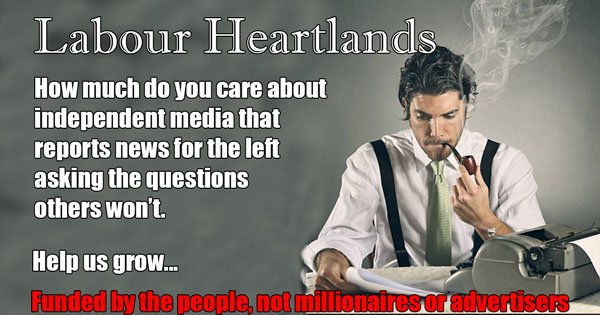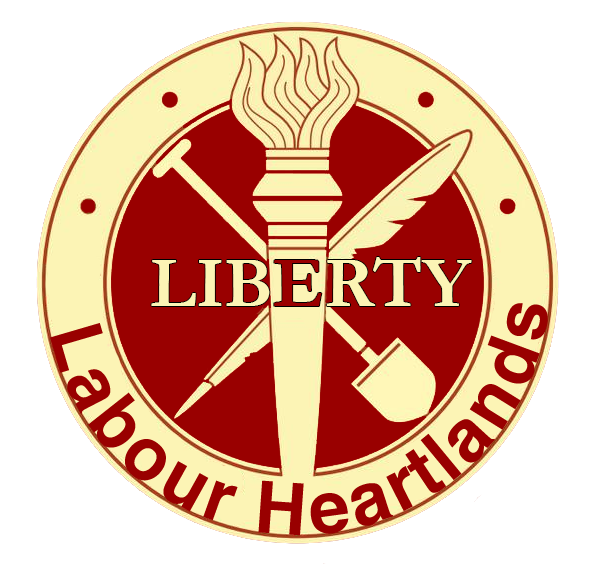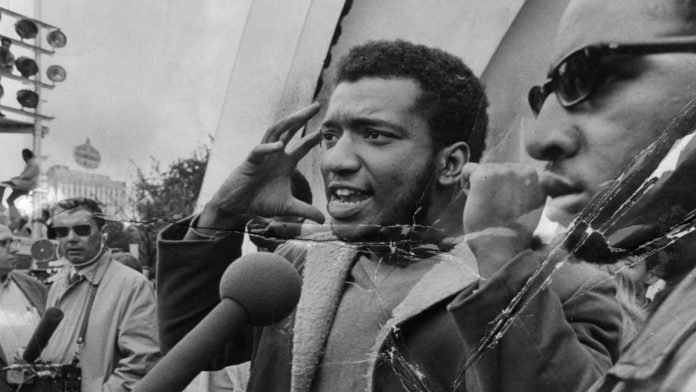
The US government’s efforts to discredit Martin Luther King and other civil rights leaders illustrate the lengths to which it will go to stifle left-wing movements.
We have all seen the picture of the hotel balcony where Martin Luther King jr. stood, and fell, surrounded by his entourage, all pointing – presumably, in the direction from which the bullet came.
All but one.
One man was not standing, not pointing, but kneeling by Martin Luther King’s body, presumably checking to see if – or that – he was dead. That man, Merrell McCullough, was an undercover police officer who had infiltrated King’s circle. According to Time magazine, he worked for the Central Intelligence Agency, at least as far back as 1974.
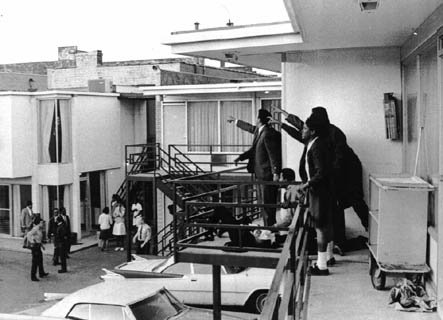
What interest could an intelligence agency have in a man who plainly believed only in peace? In August 1967, four months after King called the US government the “greatest purveyor of violence in the world today,” three months after 30 members of the Black Panther Party marched, armed, into the California state capitol and onto the front pages of newspapers worldwide, J Edgar Hoover, the head of America’s domestic law enforcement agency, the Federal Bureau of Investigation, viewed this as a threat to the American way of life and brought into effect the FBI’s COINTELPRO campaign.
What Was the Rainbow Coalition?
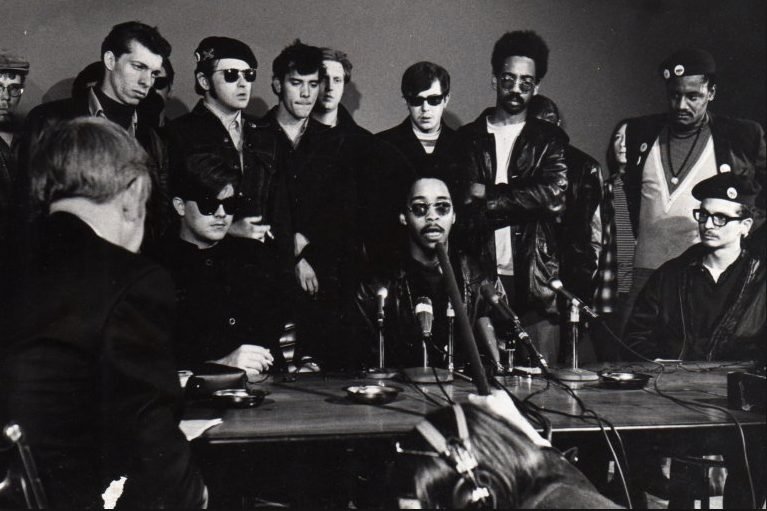
Fredrick Allen Hampton (August 30, 1948 – December 4, 1969) was an African-American activist and revolutionary socialist. He came to prominence in Chicago as chairman of the Illinois chapter of the Black Panther Party (BPP), and deputy chairman of the national BPP.
Fred Hampton quickly rose to a leadership position, becoming the deputy chairman of the Illinois chapter of the Party. He organised rallies, established a Free Breakfast program, ‘The Rainbow Coalition‘ was a multicultural movement and negotiated a peace pact among rival gangs. As a rising leader in the BPP, Hampton became the focus of an FBI investigation. On December 4, 1969, Hampton, along with fellow Black Panther Mark Clark, was murdered.
Historically speaking, the Rainbow Coalition segment of the Black Panther Party was extremely similar to the Populist Party.
The Populist Party was designed by working-class farmers and the disenfranchised of all races to form a party (or coalition) against the wealthy bankers, corporations, and politicians.
The Populist Party was a threat to the sustained American way of life, and it was dismantled after Plessy v. Ferguson, that essentially split the country among racial lines once again.
The Black Panther party was very significant. And its leadership was, as well. Fred Hampton was not only an up-and-coming leader but a very charismatic and dynamic leader. And the Panthers had a Ten-Point Program. That program covered the waterfront with all sorts of revolutionary and socialistic programs — a free breakfast program, for example, a free medical clinic, for another example, a newspaper that came out every week and talked about the atrocities of the police and the government.
It was very much an anti-imperialist organisation, fought against the War in Vietnam, said people should not go to Vietnam, opposed mass incarceration before there actually was that term, and also was very strong in setting up and fighting for coalitions between Black, white and Hispanic groups.
The true beauty of the Rainbow Coalition can be found in their quest to create a single and universal politically identity. According to Jakobi Williams, the Rainbow Coalition was the one time in “US History when identity politics and class-based struggle were dynamically intertwined.” Williams even hypothesizes in his article that it was the Rainbow Coalition that caused Martin Luther King Jr. to adopt a class-based ideology instead of solely race.
One of the primary goals of the Rainbow Coalition was to elevate those who had been deemed as marginalized or castrated by society into positions of power that enabled them with both the autonomy and capacity to create effective change in their communities for those who had been historically and contemporarily overlooked. Williams went on to say that the coalition “embodied the intersectionality of the critical issues of race, class, gender, anti-war, student, labor and sexuality. It fused these various forms of identity politics into one group with one ideal form of identity – an identity that transcends differences and focuses on commonalities.”
Fred Hampton’s preternatural ability to bring potential enemies and rivals together made him dangerous to an America that was all too happy with the racist status quo.
View this video to understand Fred Hamptons ability to overcome racial prejudice and bring people together.
The Assassination of Fred Hampton
The 21-year-old leader of the Panthers’ Chicago chapter, Fred Hampton, was murdered by Chicago police after they raided his home at 4:45 the morning of December 4, 1969. Police fired a hundred rounds into the building, most directed toward Hampton’s bedroom. Hampton’s personal bodyguard, William O’Neal, had drawn a floor plan of the house for the authorities. “It is felt,” an FBI agent wrote to Hoover after the killing, “that this information is of considerable value in consideration of a special payment for informant requested in re Chicago letter.” (O’Neal was paid $300 by the FBI after the Hampton murder.
Black Panther leader Mark Clark was also killed by police in that raid. Authorities initially claimed the Panthers had opened fire on the police who were there to serve a search warrant for weapons. Evidence later emerged that told a very different story: The FBI, the Cook County State’s Attorney’s Office and Chicago police had conspired to assassinate Fred Hampton.
“The man murdered Fred Hampton,” Bobby L. Rush, then minister of defence for the Illinois Black Panthers and today a Democratic congressman from Chicago said of Hanrahan in a TV interview.
“We’ll prove it to the world that Fred Hampton was murdered.”

FBI Director J. Edgar Hoover called the Black Panther Party “the greatest threat to the internal security of the country” — and the bureau acted accordingly. A civil suit filed by survivors of the raid would produce evidence that an FBI informant provided a diagram of the apartment to Chicago police. The suit also revealed that Hampton and the Illinois chapter of the party had been targeted by the FBI’s COINTELPRO campaign to disrupt and undermine militant groups.
On the evening of December 3, 1969, William O’Neal, who was employed by the FBI to infiltrate the BPP, slipped a powerful sleeping drug into Hampton’s drink then left. Officers were dispatched to raid his apartment. They stormed in and opened fire, killing his security guard. Then they opened fire on Hampton’s bedroom where he laid unconscious from the drug with his sleeping, almost nine-month-pregnant fiancee. After the gunfire, he was found to only be wounded and not dead. Upon that discovery, an officer shot him twice in his head and killed him. The remaining seven Panthers who were not killed were all arrested and indicted by a grand jury on charges of attempted murder, armed violence, and a variety of weapons charges. These charges were eventually dropped when during a later investigation, it was discovered that Chicago Police fired ninety-nine shots while the Panthers only shot once.
FBI Director J. Edgar Hoover called the Black Panther Party “the greatest threat to the internal security of the country” — and the bureau acted accordingly. A civil suit filed by survivors of the raid would produce evidence that an FBI informant provided a diagram of the apartment to Chicago police. The suit also revealed that Hampton and the Illinois chapter of the party had been targeted by the FBI’s COINTELPRO campaign to disrupt and undermine militant groups.
‘You are done’: A secret letter to Martin Luther King Jr. sheds light on FBI’s malice
Those disclosures came long after Hampton and Clark were killed. But in the aftermath of the raid, many were already convinced it was part of a coordinated assault hatched by the FBI and the Nixon administration Justice Department.
In 1967 J Edgar Hoover, the Federal Bureau of Investigation issued the following directive: “The purpose of this new counterintelligence endeavour is to expose, disrupt, misdirect, discredit or otherwise neutralise the activities of black-nationalist, hate-type organisations and groupings, their leadership, spokesmen, membership and supporters.”
By “hate-type organisations”, Hoover explained that he meant “such groups as the Student Nonviolent Coordinating Committee, [King’s] Southern Christian Leadership Conference … the Congress of Racial Equality and the Nation of Islam”, the group Malcolm X belonged to until shortly before his 1965 murder. In February 1968, there was a massive demonstration in support of the then-imprisoned leader of the Black Panthers, and Stokely Carmichael and H Rap Brown merged SNCC with the Panthers. Hoover issued another directive: “Prevent the rise of a ‘messiah’ who could unify and electrify the militant black nationalist movement. Malcolm X might have been such a ‘messiah’… . Martin Luther King, Stokely Carmichael, and [Nation of Islam leader] Elijah Muhammed [sic] all aspire to this position … . King could be a very real contender for this position should he abandon his supposed ‘obedience’ to ‘white, liberal doctrines’ (nonviolence).”
According to another declassified FBI memo, shortly afterwards the FBI proposed having “a carbon copy of [an] informant report reportedly written by Carmichael to the CIA carefully deposited in the automobile of a close black nationalist friend. … It is hoped that when the informant report is read it will help promote distrust between Carmichael and the black community.” FBI agents called Carmichael’s mother, falsely telling her that Black Panthers were out to kill her son. Soon after, Carmichael left the country.
In March 1976, we sat in a cavernous Chicago courtroom while FBI agent Roy Martin Mitchell testified in the federal civil rights case that we and our partners at the People’s Law Office had brought on behalf of the families of slain Illinois Black Panther leaders Fred Hampton and Mark Clark and the seven survivors of the murderous pre-dawn Chicago police raid on their West Side apartment.
New Documents Suggest J. Edgar Hoover Was Involved in Fred Hampton’s Murder
Thanks to the liberation of FBI documents from the Media, Pennsylvania FBI offices, the revelations of the Senate Select Committee on Intelligence Activities by the Truth Out organisation they have been able to document the local FBI’s central role in setting up the raid as part of the Bureau’s secret and highly illegal COINTELPRO Program. This program had previously targeted Black liberation leaders including Malcom X, Dr. Martin Luther King Jr., Stokely Carmichael, H. Rap Brown, Elijah Muhammad and the organisations that they led. As the Senate Select Committee would later find in its April 1976 report, the FBI had more recently turned its attention to “destroy[ing] the Black Panther Party.”
Roy Martin Mitchell was an integral member of the Chicago FBI office’s Racial Matters Squad and the control agent for a prized “asset”: informant-provocateur William O’Neal, who was the captain of security of the Chicago chapter of the Black Panther Party (BPP). As such, O’Neal had ready access to the local BPP chairman, the dynamic Fred Hampton, who had garnered particular attention from Mitchell, his Racial Matters Squad and the COINTELPRO program. READ MORE HERE
In 1982, the Justice Department, the city and Cook County settled the $47 million civil suit filed by survivors and the families of Clark and Hampton for $1.82 million. A Justice Department attorney said the settlement did not concede wrongdoing, but one of the attorneys for the plaintiffs described it as “an admission of the conspiracy that existed between the FBI and Hanrahan’s men to murder Fred Hampton,” according to the Times.
We say you don’t fight racism with racism.
We’re gonna fight racism with solidarity.
We say you don’t fight capitalism with no black capitalism;
you fight capitalism with socialism.–
FRED HAMPTON
There will be a A new film titled Judas and the Black Messiah released 2021 depicting the life and death of Fred Hampton
This article took extracts from Democracy Now. Truth Out organisation The Washington Post and The Guardian
Help Us Sustain Ad-Free Journalism
Sorry, I Need To Put Out the Begging Bowl
Independent Journalism Needs You
Our unwavering dedication is to provide you with unbiased news, diverse perspectives, and insightful opinions. We're on a mission to ensure that those in positions of power are held accountable for their actions, but we can't do it alone. Labour Heartlands is primarily funded by me, Paul Knaggs, and by the generous contributions of readers like you. Your donations keep us going and help us uphold the principles of independent journalism. Join us in our quest for truth, transparency, and accountability – donate today and be a part of our mission!
Like everyone else, we're facing challenges, and we need your help to stay online and continue providing crucial journalism. Every contribution, no matter how small, goes a long way in helping us thrive. By becoming one of our donors, you become a vital part of our mission to uncover the truth and uphold the values of democracy.
While we maintain our independence from political affiliations, we stand united against corruption, injustice, and the erosion of free speech, truth, and democracy. We believe in the power of accurate information in a democracy, and we consider facts non-negotiable.
Your support, no matter the amount, can make a significant impact. Together, we can make a difference and continue our journey toward a more informed and just society.
Thank you for supporting Labour Heartlands
